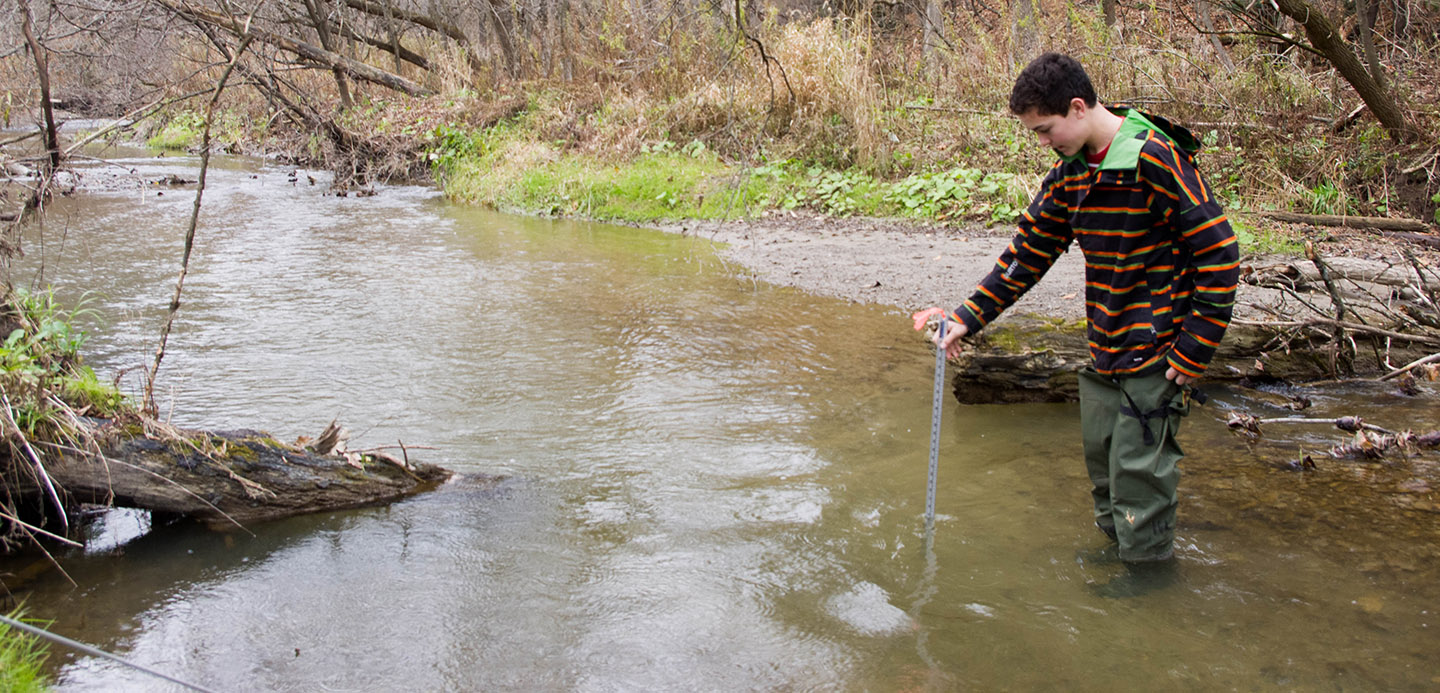Investigate the physical characteristics of a river and measure water flow and velocity. Observe valley features and significance of a river watershed.

In an introductory lesson, students will learn about watersheds and the Humber River.
Along the walk to the stream, students will observe river features such as a valley, ravine, terrace and floodplain.
At the stream, students working in supervised teams will be shown how to take measurements accurately and safely. Using hip waders, measuring tapes and metre sticks, they will record stream metrics at various places along the stream bed. This information will be used to calculate average depth (m) and cross-sectional area (m2).
Other students in each team will calculate current speed (m/sec), and note the substrate (mud, sand, gravel, or stone).
Preparation: At least one person in each team should have a watch that displays seconds. We recommend that students bring an extra pair of socks, and dress warmly in cool weather.
If the stream flow or depth is above normal levels, students will not enter the water but take measurements from the shore. Additional adults are welcome to help supervise student teams.
Half Day | Late April to October
Please contact vservices@trca.ca to book.
Curriculum Connections:
• Matter and Energy – Grade 8: Fluids
• Life Systems – Grade 7: Interactions in the Environment
• Earth and Space – Grade 8: Water Systems | Grade 10: (Acad.) Climate Change; (Appli.) Earth’s Dynamic Climate | Grade 12: (U Prep.) Earth Materials
• Science and Technology
• Biology – Grade 9: (Acad.) Sustainable Ecosystems; (Appli.) Sustainable Ecosystems and Human Activity | Grade 11: (U Prep.) Diversity of Living Things
